10 Hardest PSAT Grammar Questions
Each year, more than 3.4 million high school students take the Preliminary SAT (PSAT), a nationwide multiple choice test designed to prepare students for the SAT and identify exemplary students across the nation. The PSAT is a practice version of the SAT, and 10th and 11th graders are eligible to take it once per year. The PSAT is a 2 hr 45 minute long test that assesses a student’s skills in reading, writing, and math. Like the SAT, the PSAT has four sections: Evidence-based Reading, Writing and Language, Math (no calculator), and Math (calculator allowed). The Writing and Language section tests a student’s grammar skills. In this post, we’ll cover some of the most difficult Writing and Language practice questions, with explanations and tips on how to answer them! Your PSAT score will not directly affect your college chances, but it is a good indicator of your performance on the SAT, which does affect your college chances. Your score on the PSAT will establish your baseline score and highlight which sections you can study and improve upon before taking the SAT. Check out our post on how to understand, interpret, and use your PSAT results to your advantage! The PSAT is not only a valuable indicator of a student’s performance on the SAT, but also an opportunity for high school students to earn scholarships. The highest scorers on the PSAT qualify for the National Merit Scholarship. Score cutoffs for the different levels of recognition vary by state and determine your eligibility for various scholarships. Wondering how your test scores will impact your chances of admission? Check out CollegeVine’s free chancing engine! This tool will factor in your GPA, test scores, extracurriculars, and more to determine your odds of acceptance at hundreds of schools across the country. The Writing and Language Test (or section) of the PSAT asks students to act as editors and correct or improve deliberate grammatical errors in select passages. Luckily, most students do this on a regular basis – think of it as reading a friend’s essay, finding mistakes or weaknesses, and fixing them. Students are given 35 minutes to complete the 44 multiple choice questions that comprise the Writing and Language section of the PSAT. One point is awarded for each correct answer, and there is no penalty for answering a question incorrectly. The Writing and Language Test is part of the larger Evidence-Based Reading and Writing section of the PSAT, therefore your raw score on the Writing and Language Test will be combined with your raw score on the Reading Test before being converted to a scaled score within the range 160-760. Then, your scaled score on the Evidence-Based Reading and Writing section will be added to your scaled score on the Math section to determine your composite score which will range from 320 to 1520. All of the questions in the Writing and Language section focus on a single sentence or interpretation of a graphic (tables, graphs, charts, etc.) within a given passage. You may be asked to replace a sentence that doesn’t suit the paragraph, correct subject-verb or punctuation errors, change a poor interpretation of data, or make other edits to improve grammatical accuracy. More specifically, the PSAT Writing and Language section tests the following skills: Command of evidence means changing the way passages develop ideas and deliver information. Here, you might select answer choices that add relevant supporting details or sharpen an argument. A few questions will ask you to improve word choice. Based on the contextual connotation, a better word choice will boost style, tone, syntax, or simply make a sentence more concise and accurate. Some passages will cover historical, societal, and scientific topics. The student’s task is to closely analyze these passages and make edits that enhance them. A number of questions will ask a student to look at the organization of a passage, then evaluate its impact. Reorganization and structural changes will improve how the sentence and paragraphs work together. This covers the fundamental elements of writing: punctuation, sentence structure, and usage. Some grammatical topics covered here include subject-verb agreement, parallel structure, comma use, and verb tense. Daily practice noticing and correcting grammatical errors helps students develop a natural intuition useful for the Writing and Language section. However, there are some especially difficult questions that require a deeper understanding and more critical thinking. This post will cover some of these more challenging problems, and eventually, with continuous practice, they will become easier. The PSAT consistently tests on a certain set of grammatical rules, including the trickier ones. Familiarizing yourself with this standard set of grammatical rules will make the Writing and Language section a breeze! The following 5 questions refer to the passage below: Answer: C This first question focuses on sentence structure, asking you to maintain a sentence pattern established in the paragraph. The pattern is a noun (“A subway system,” “A bike-sharing program”) followed by a passive verb phrase (“is expanded,” “is adopted”). The answer choice that follows this structure is answer choice C: “Stoplight timing is coordinated.” Where “stoplight timing” is the noun and “is coordinated” is the passive verb phrase. Answer: D This question is asking you to maintain subject verb agreement, as well as pronoun antecedent agreement. The first step is to identify the subject the verb and pronoun are referring to. A helpful way to identify the subject is to eliminate prepositional phrases, as anything contained in a prepositional phrase is not the main subject of the sentence. Here, you would eliminate “of these changes,” so that the sentence becomes “When any one occur, it is likely.” Here, it is easy to see that the verb (“occurs”) and pronoun (“it”) are referring to the antecedent subject “any one.” Also, the mistake becomes more obvious when so close to the subject. The key to solving this question is identifying that the subject (“any one”) is singular. Testing out the phrases in your head will help make this clear. For instance, if you added the word “thing” to the end of the subject, it would be “any one thing,” not “any one things.” Because the subject is singular, the verb “occurs” must be singular, and the pronoun “it” is also singular. Answer: A Always closely read the questions to understand what the question is asking for, as it can make questions like this much easier. The directions ask which choice has the most effective transition to the information that follows in the paragraph. Thus, you know to focus on the information that follows the sentence. The next sentence uses a large factory built “on the outskirts of a small town” as an example to something mentioned in the sentence the question is addressing. Therefore, there has to be something in the sentence that touches on the topic of a small town, and answer choice A, aka no change, is the only one that does. It introduces “rural areas.” Answer: A Here, the correct answer is that there is no change required. The list of majors is a subordinate/dependent clause (a clause that cannot stand alone as a sentence). To subordinate a dependent clause, you can use a subordinating conjunction (for, as, since, therefore, which, whose, etc). Answer choices B and C use the coordinating conjunction “and,” which is meant to unify two independent clauses, not add on a dependent one. Answer choices A and D use subordinating conjunctions. Answer choice A uses “including” and answer choice D uses “which.” However, it is unclear to what exactly “which” is referring to, and therefore A is the better answer choice.
Answer: C This question is asking you to look at and correctly interpret the data presented in the graph below. To begin, look specifically at what the graph is presenting. The title says “Percent increase in employment.” Therefore, you can eliminate answer choices B and D, as they are discussing how much job growth will slow, or how many positions will remain unfilled. Moreover, you can eliminate answer choice A by focusing on what it is claiming – that 16% of new jobs in all occupations will be related to urban and regional planning. Once again, the bar graph title explains that the data is showing a percent increase in employment, not the percentage of new jobs related to specific fields. Additionally, the bar graph shows the percent increase in employment for all occupations as a separate statistic from the urban and regional planning, further distinguishing the two. The next five questions refer to the passage below: Answer: B This question requires a strong understanding of various punctuation and their functions in a sentence. A colon is used to separate an independent clause from an element or list of elements that emphasizes or explains what precedes the colon. A semicolon is used to separate two independent clauses closely related in thought. A comma is meant to separate words, phrases, dependent clauses, or ideas to clarify meaning. All of the aforementioned punctuations are meant to create a pause in a sentence. The given sentence is already separated into these pauses, it is the student’s job to select the correct punctuation to put into these pauses. The first pause is supposed to be a colon, as “king” and “man” are the “two parts” referred to in the preceding independent clause. If there is a pause that is followed by emphasizing information or explanations, use a colon. The second pause is meant to be a comma, as it is separating the dependent clause “cantonese for ‘scenery’ and ‘composition’.” Answer: A Here, NO CHANGE is the correct answer. This sentence is comparing two like terms, and you must identify which is the most correct comparison. The term being compared to is “his works,” so the answer choice must have a similar definition. The only option that is interchangeable with “works” is “paintings,” so the passage is correct as is. Kingman’s works cannot be compared with artists and painters. Instead, it would have to be Kingman himself as the comparison. Answer: C This question asks you to evaluate word choice and decide which word best fits the sentence in the given context. In this case, the word chosen should have a connotation of “leaving” or “deviating” from a tradition. “Vacated” suggests an empty position, and doesn’t give a sense of “leaving.” “Evacuated” has a connotation of hurriedly leaving a place due to a perceived threat, and that is not what Kingman is doing here. “Retired” has a strong connotation with work and old age, which doesn’t fit into this context. Therefore, “departed” is the best choice, as it signifies a chosen deviation and “leaving” from the tradition, without any out of place or awkward connotations. Overall, when tackling these kinds of questions, think about the typical contexts in which you would see the presented words, and compare them to the given passage. Answer: D Here, you must choose the example that best fits into the sentence and conveys the majesty of Kingman’s city skylines. The question specifies choosing a detail used to create “majestic city skylines,” which is a hint that the answer choice has to have a sense of epicness or greatness. Focus on the two previously mentioned examples to understand the general theme and style the passage is looking for. Firstly, there are “skyscrapers towering in the background,” and then “bridges connecting neighborhoods on either side of a river.” From these, you can assume that the third example will also describe something on a large scale. Answer choice A describes “delicately painted creatures,” which contrasts with the large, heavy skyscrapers and bridges. Answer choice B, with its “exquisitely lettered street and storefront signs”, has the same problem. This answer choice expands on the small details you would find on the already described skyscrapers, and doesn’t introduce another large, majestic element. Answer choice C is too vague and general to count as a third example. Answer choice D is the correct answer because it is a specific example that matches the enormity and majesty of the skyscrapers and bridges. Answer: C This question asks for an answer choice that accomplishes a particular writing goal. Specifically, a conclusion that emphasizes an enduring legacy of Kingman’s work. The phrase “enduring legacy of Kingman’s work” is the most critical portion of this question. “Enduring” means that it will stand the test of time. Also, “legacy of Kingman’s work” qualifies that the conclusion has to focus especially on Kingman’s impact. With that phrase in mind, you can begin eliminating answer choices. Answer choice A claims that Kingman’s work is not as famous as other painters, which immediately diminishes the impact of his legacy and is therefore incorrect. Answer choice C is incorrect because it explains the accuracy of his name, but does not address his legacy in any way. Answer choice D explains Kingman’s work as “but one example,” which downplays his significance. Additionally, it is vague and doesn’t suggest an enduring legacy. Ultimately, answer choice B is the best conclusion. It focuses solely on Kingman’s work and gives an example as to how his legacy is enduring past his death. As you prepare to take the PSAT Writing and Language section, here are some final tips to help you answer any tough questions you may encounter! One of the easiest ways to catch a grammatical error is to mentally read out the sentence. Swap in each answer choice to detect which one sounds the best. Additionally, feel free to delete prepositional phrases that unnecessarily distract from the core subjects and verbs of the sentence. We talk and write everyday, and unconsciously use all of the language rules presented. Your intuition is a powerful tool in the Writing and Language section, so saying something as you would normally say or hear it can help provide clarity on a tough question. When dealing with something as specific and nitpicky as grammar, each word choice in the directions for a question is important. A specific phrase or implication in the directions will be helpful in eliminating answer choice. Overall, pay VERY close attention to the writing and word choices in the passages, infographics, questions, and answer choices. Since there is no penalty for incorrect answers, you should answer all the questions in this section (and all the other PSAT sections) to the best of your ability. You may be tempted to skip questions that you are unsure of, but there is absolutely no advantage to leaving questions blank. With that said, if you are stuck on a question, try to rule out as many wrong choices as possible and take an educated guess. Your guess could very well be the correct answer and earn you another point! For more information about the PSAT, check out these articles:

What’s Covered:
How Will My PSAT Score Affect My College Chances?
Overview of the PSAT Writing and Language Test
Command of Evidence
Words in Context
Analysis in History/Social Studies and in Science
Expression of Ideas
Standard English Conventions
10 Hardest PSAT Writing and Language Questions
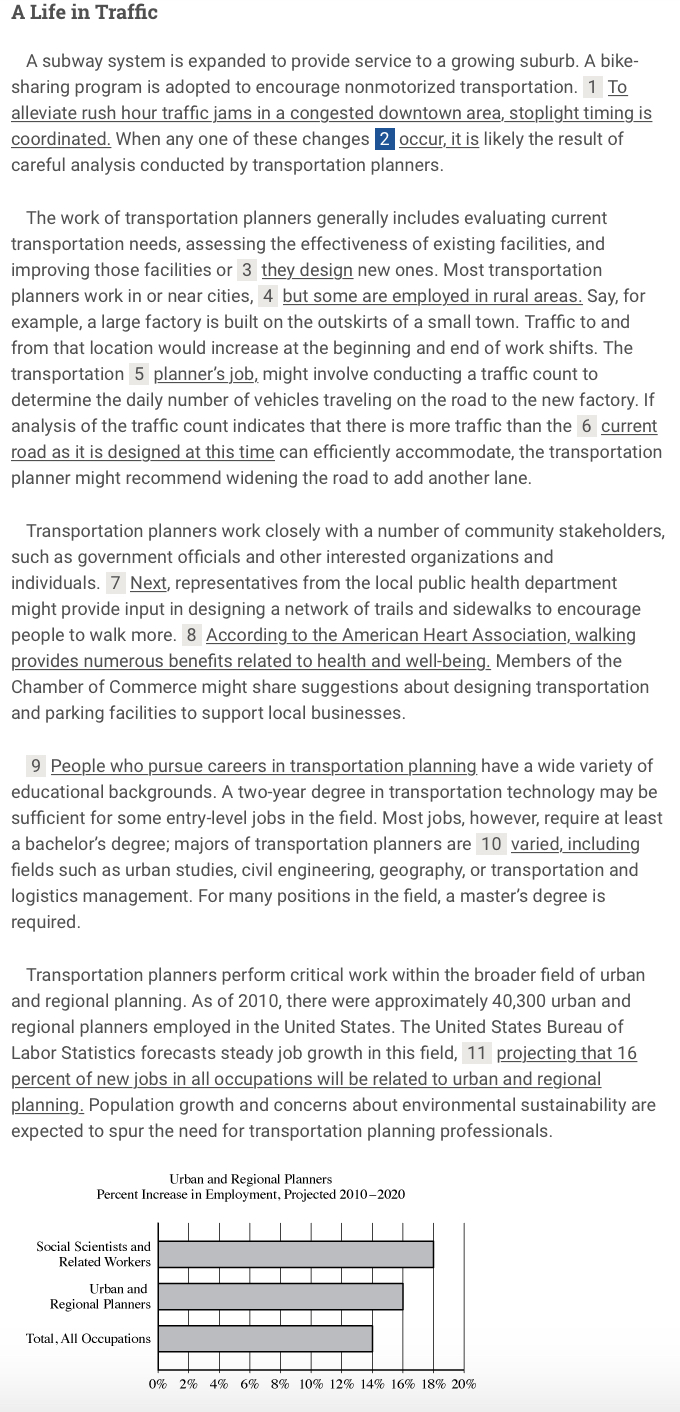
1. Question 1
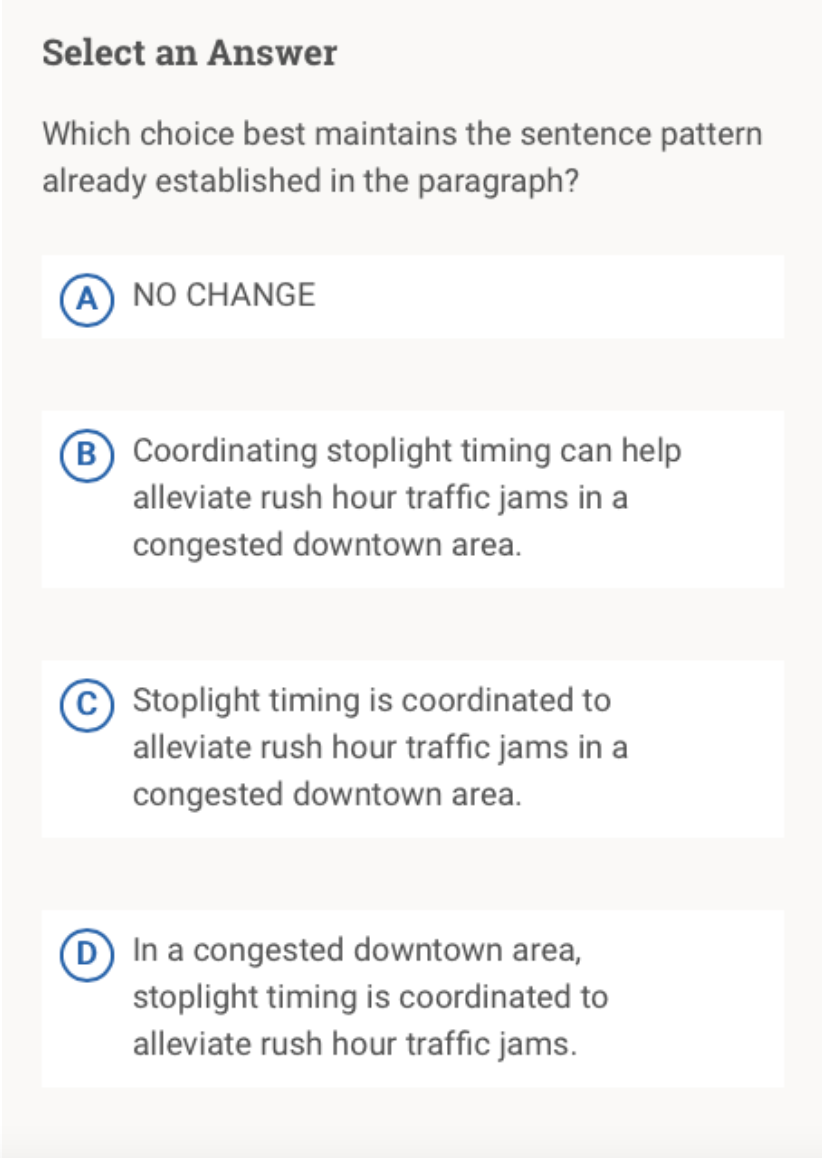
2. Question 2
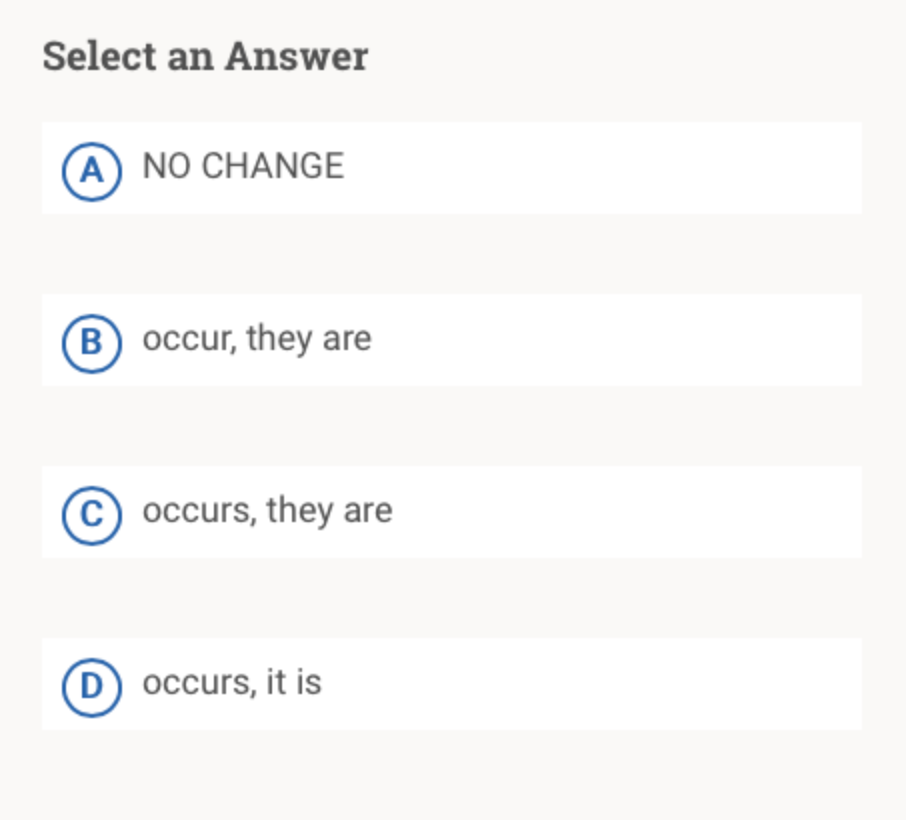
3. Question 4
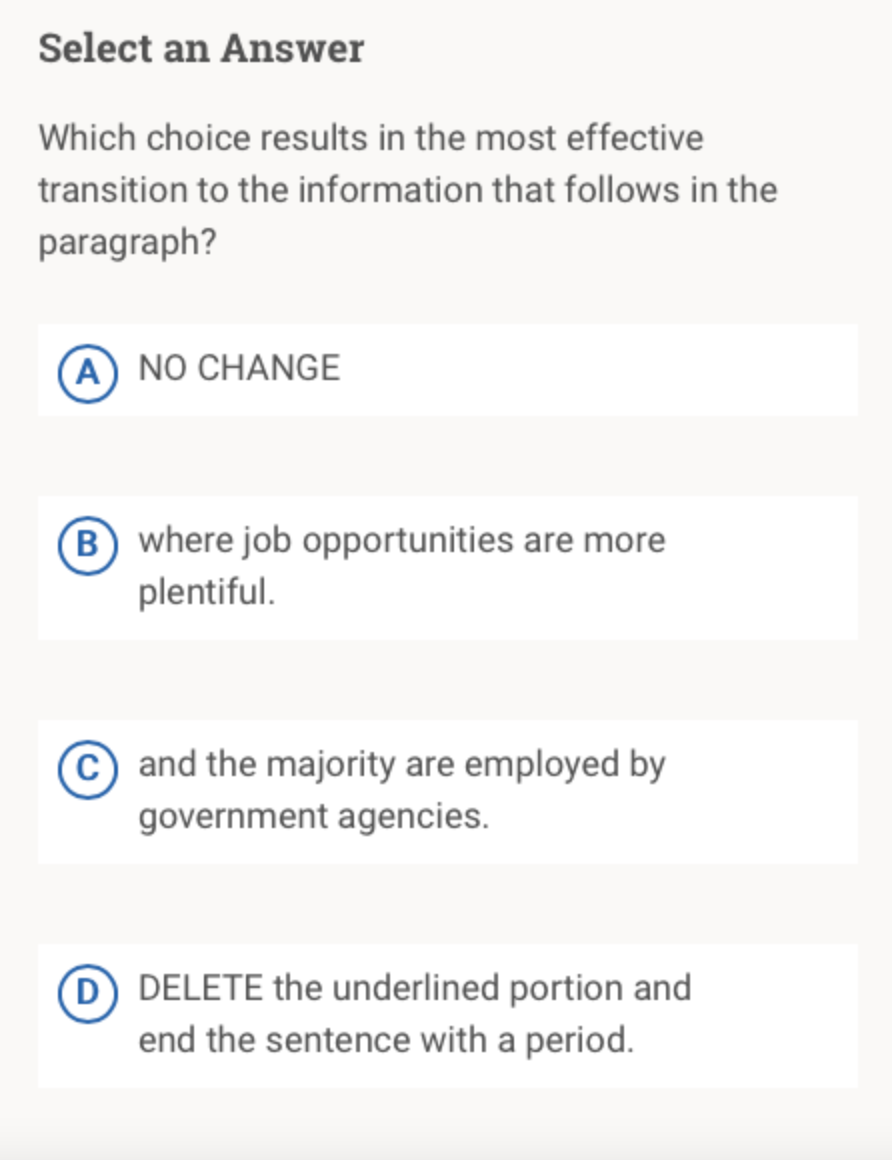
4. Question 10
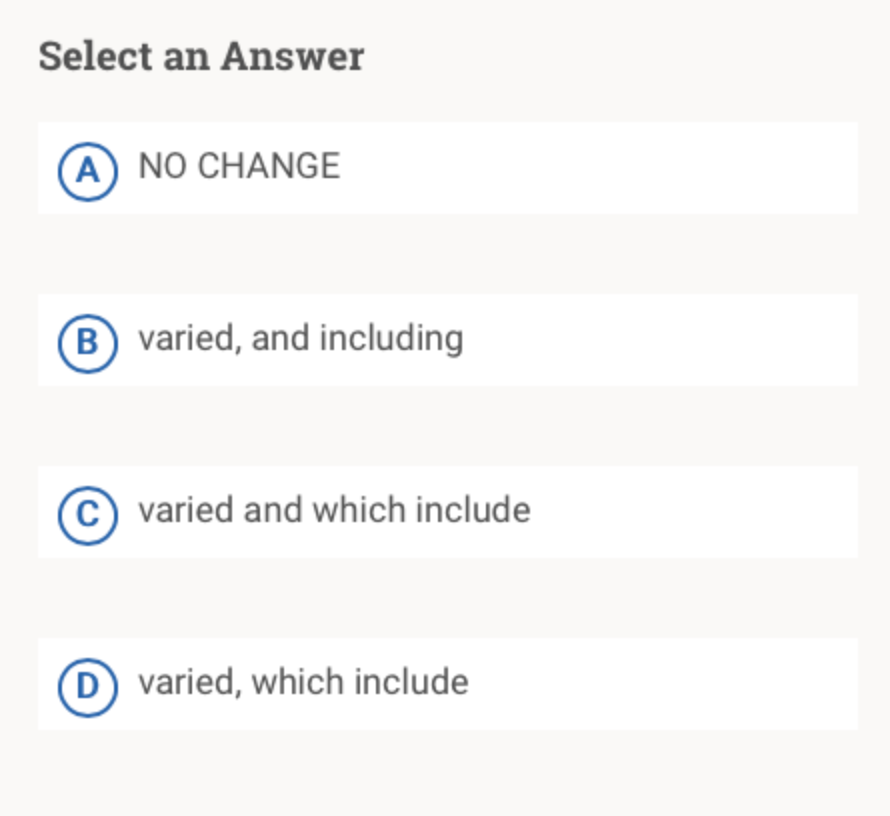
5. Question 11
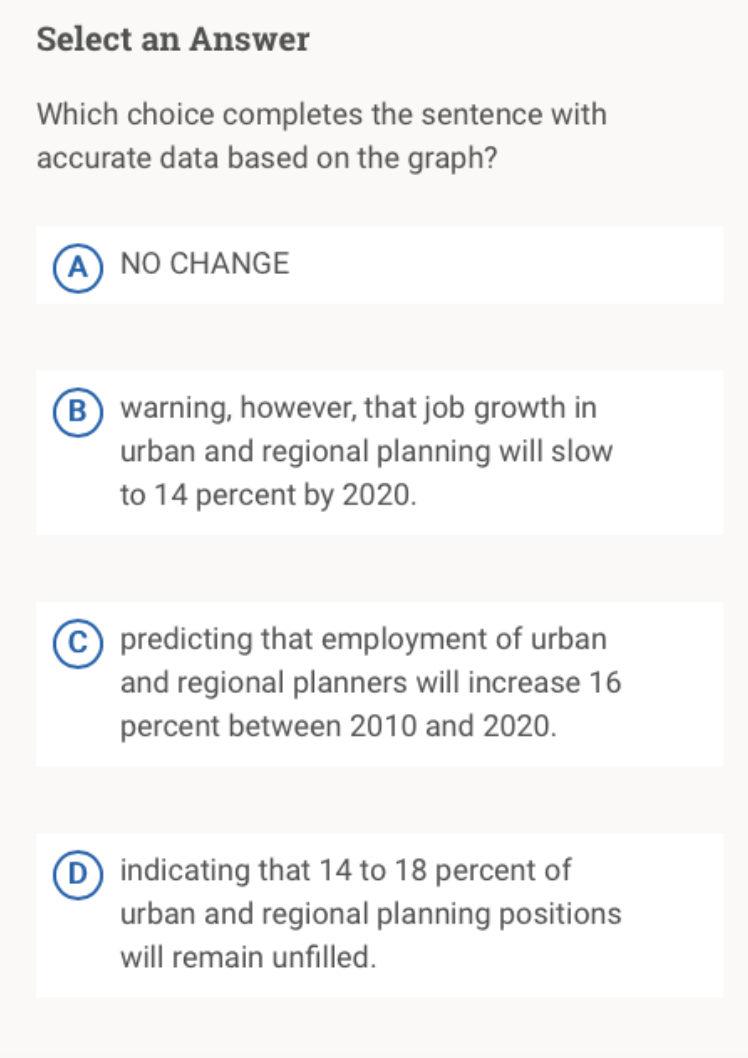
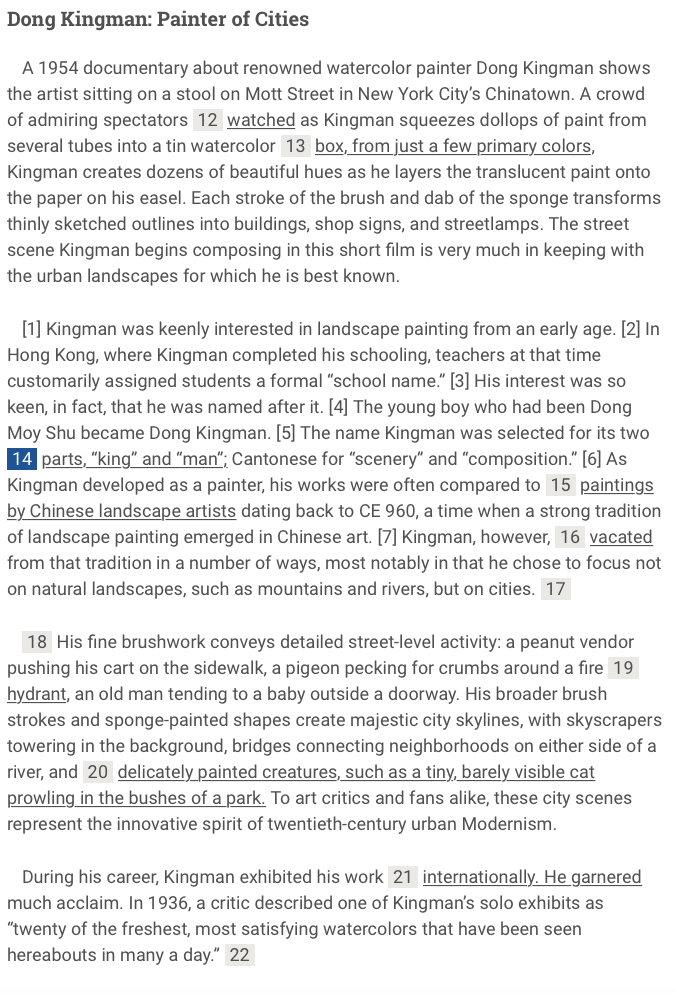
6. Question 14
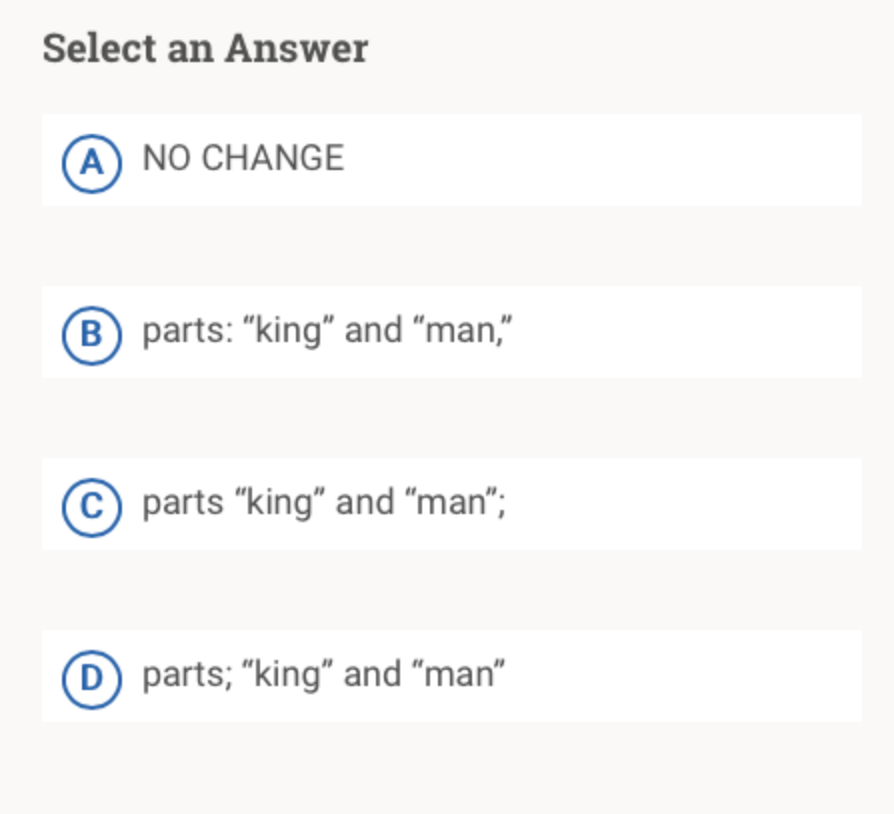
7. Question 15
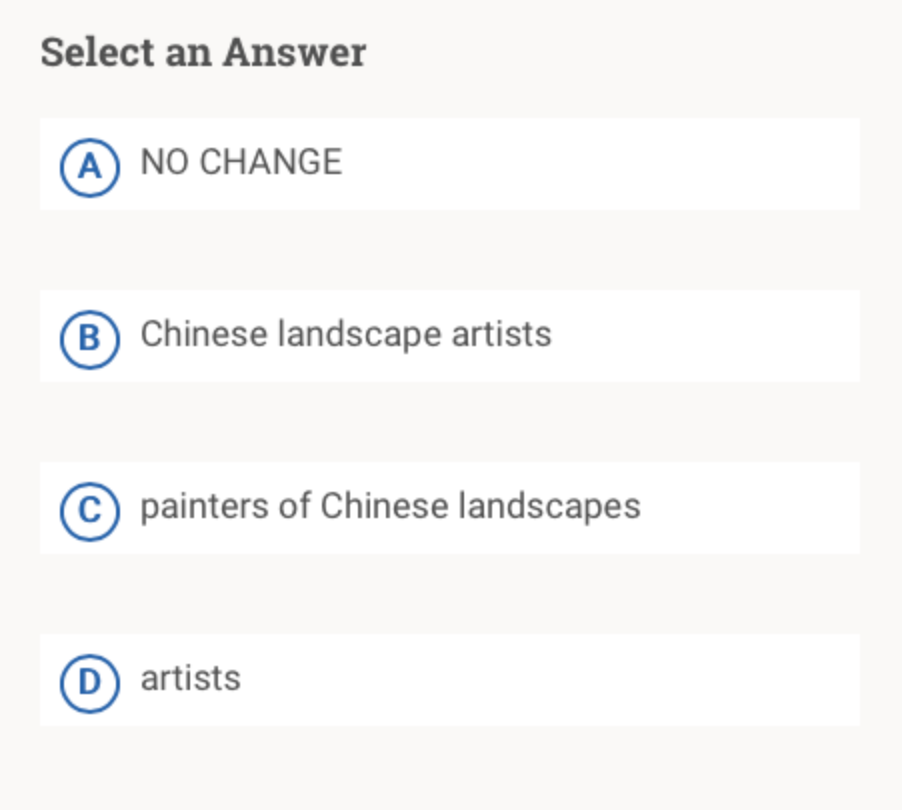
8. Question 16
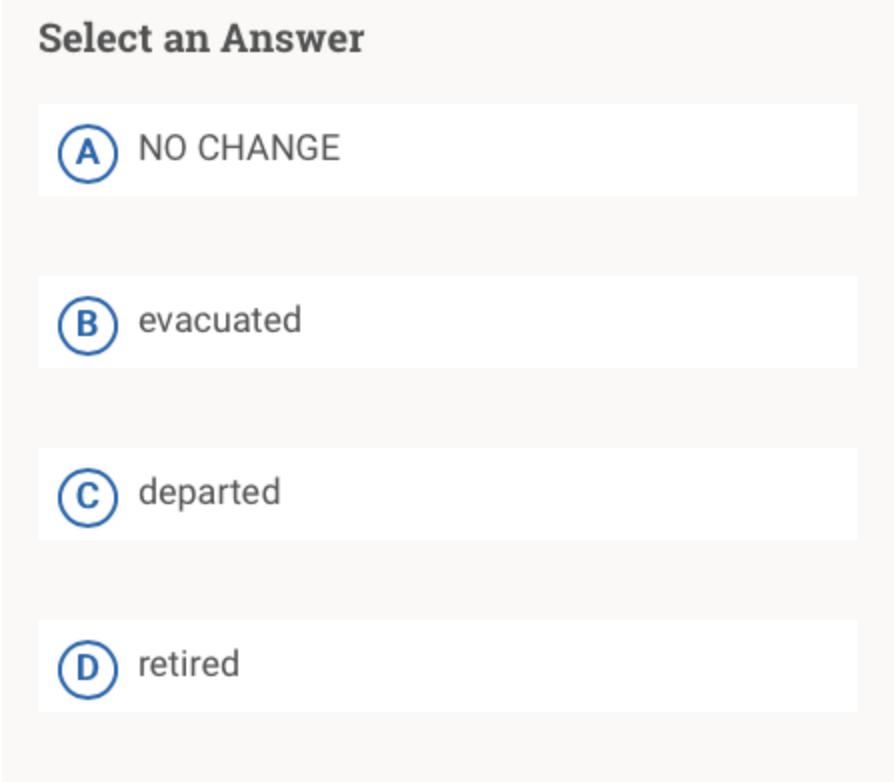
9. Question 20
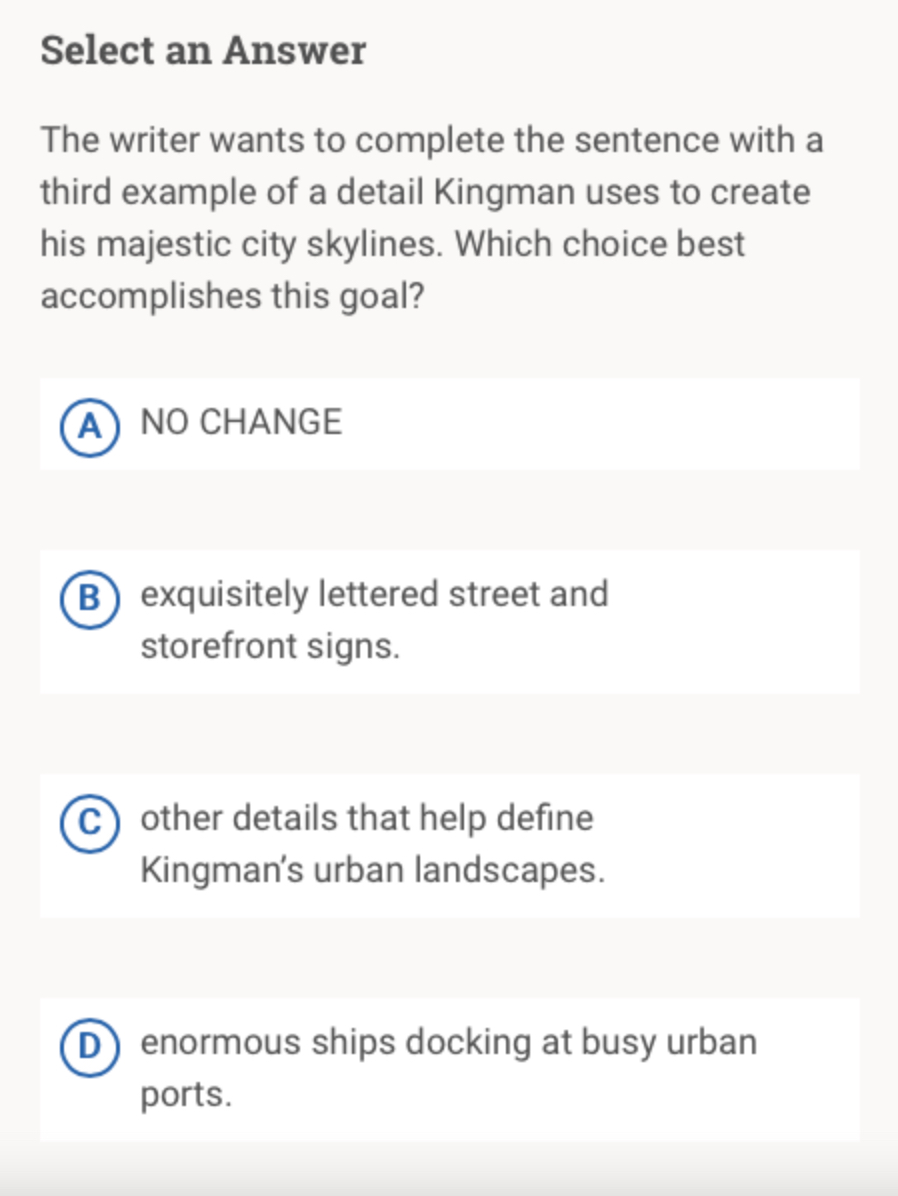
10. Question 22
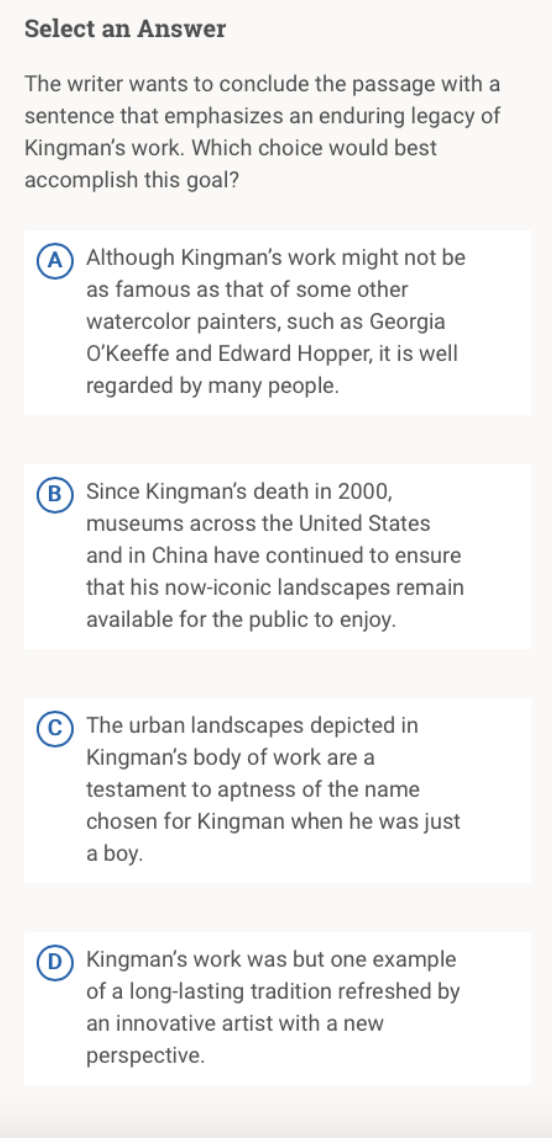
Final Tips
Talk things out
Pay close attention to what the question is asking
Answer every question





